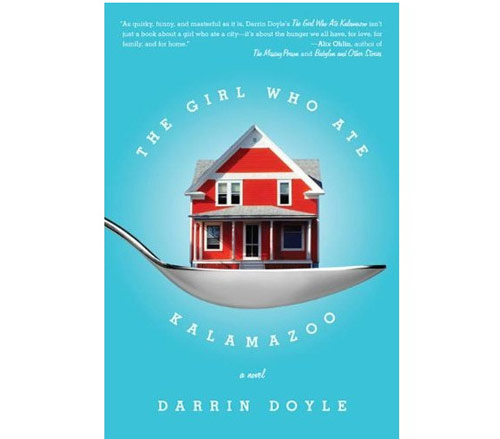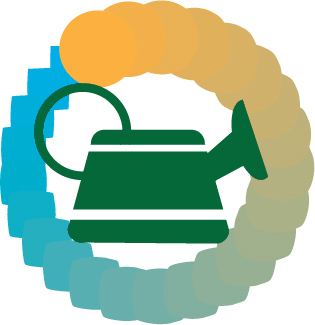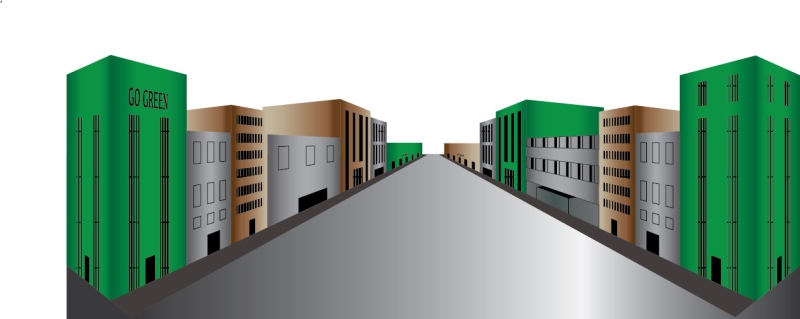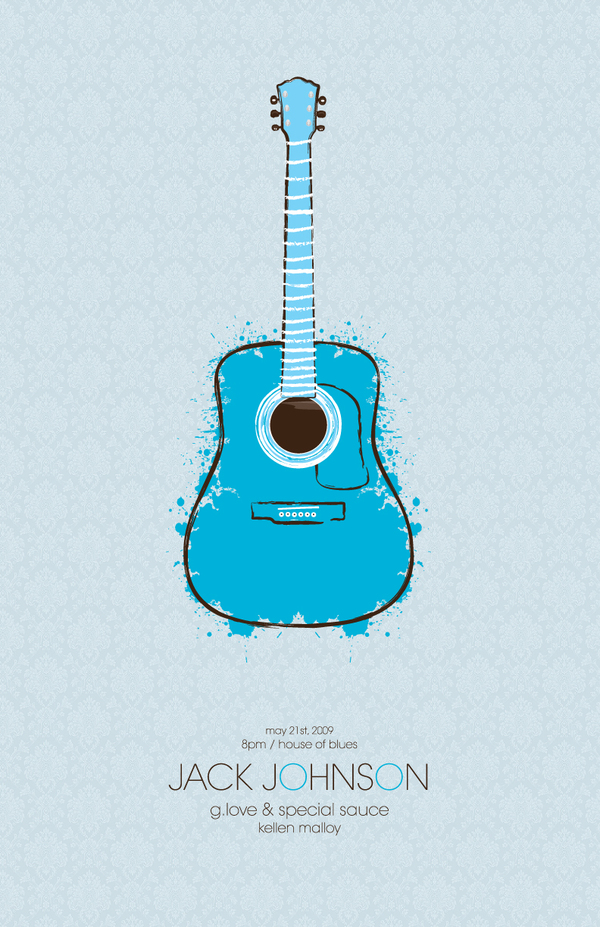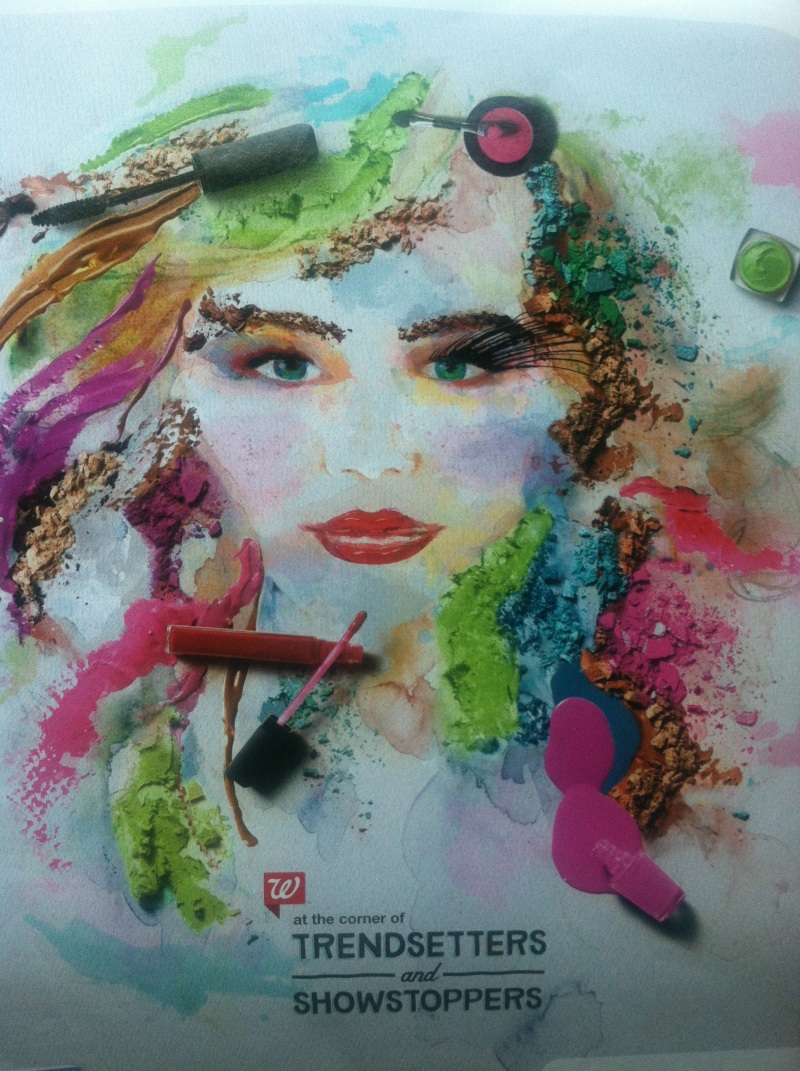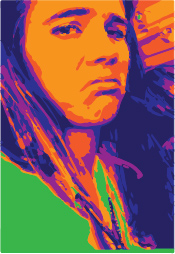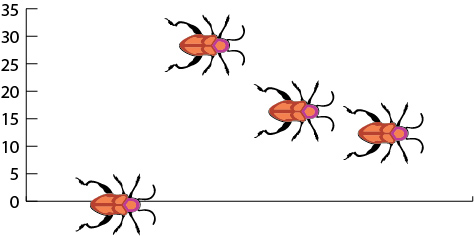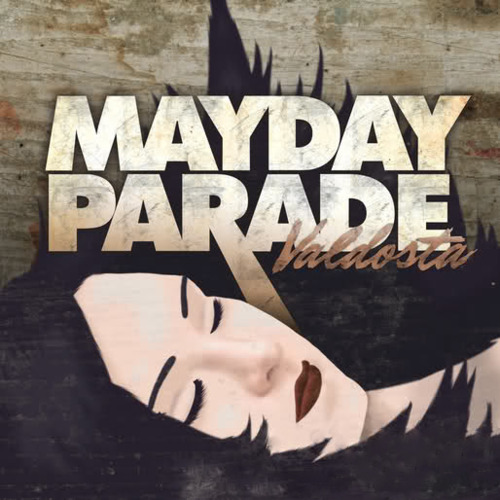
I found this album cover while scrolling through my itunes and realized it had some design qualities we have talked about. It was probably made in Adobe Illustrator. The face was more than likely created using the pen tool and filled using the gradient mesh. The artist either chose skin tone colors or used the eyedropper tool to grab skin tones from an actual picture. It looks like the artist also added a drop shadow under the chin which means the face and neck are two separate shapes. The hair was created with the pen tool and is a separate shape that was placed on top of the face. The type has several ligatures where the letters come together as one shape. The letters were probably transformed into shapes using create outlines. The letters that are combined in to one could have been combined using the merge tool on the pathfinder window. They were able to elongate the stroke of the R by using the direct selection tool, selecting the two bottom anchor points, and dragging down. The letters P, A, and R in PARADE also look like they have a linear gradient on them where it gets darker at the bottom of the letters. The word Valdosta also looks as though it has a lower opacity because you can somewhat see the distress marks through it. The background is probably an image of texture they were able to add some effects to in order to make it look a little more distressed and have the right colors.
